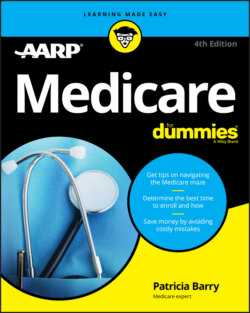Читать книгу Medicare For Dummies - Barry Patricia, Patricia Barry - Страница 15
Part B
ОглавлениеMany people in Medicare never need to go into the hospital, but almost everybody sees a doctor or needs diagnostic screenings and lab tests sooner or later. That’s where Part B — known as medical insurance — comes in. The wide range of services it covers includes the following:
Approved medical and surgical services from any doctor who accepts Medicare patients, whether those services are provided in a doctor’s office, in a hospital, in a long-term-care facility, or at home
Diagnostic and lab tests done outside hospitals and nursing facilities
Preventive services such as flu shots, mammograms, screenings for depression and diabetes, and so on, many of which are free
Some medical equipment and supplies (for example, wheelchairs, walkers, oxygen, diabetic supplies, and units of blood)
Some outpatient hospital treatment received in an emergency room, clinic, or ambulatory surgical unit
Some inpatient care in cases where patients are placed under observation in the hospital instead of being formally admitted
Inpatient prescription drugs given in a hospital or doctor’s office, usually by injection (such as chemotherapy drugs for cancer)
Some coverage for physical, occupational, and speech therapies
Outpatient mental health care
Second opinions for non-emergency surgery in some circumstances
Approved home health services not covered by Part A
Ambulance or air rescue service in circumstances where any other kind of transportation would endanger the patient’s health
Free counseling to help curb obesity, smoking, or alcohol abuse
You must pay a monthly premium to receive Part B services unless your income is low enough to qualify you for assistance from your state. Most people pay the standard Part B premium, which is determined each year by a formula set by law ($144.60 in 2020). If your income is over a certain level, however, you’re required to pay more.
You also pay a share of the cost of most Part B services. In traditional Medicare, this amount is almost always 20 percent of the Medicare-approved cost. Medicare Advantage health plans charge different amounts — usually flat dollar co-pays for each service. I go into detail about the out-of-pocket costs for Part B in Chapter 3, and I explain ways to lower them in Chapter 4.
